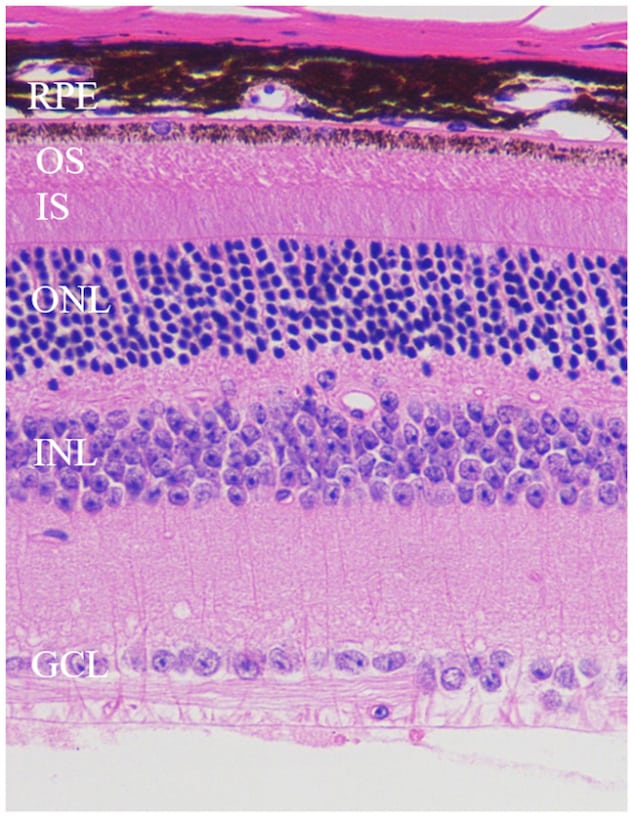
Mammals can detect light in the visible wavelength range of the electromagnetic spectrum, that is, between 400 and 700 nm. A team of researchers have now extended this capability to the near-infrared in mice by injecting photoreceptor-binding upconverting nanoparticles (pbUCNPs) into the back of their eyes. The technique could be used to develop improved near-infrared and night vision technologies for military and civilian applications and help treat certain ocular defects.
The photoreceptors (rods and cones) in mammalian eyes contain light-absorbing pigments consisting of opsins and their covalently-linked retinals. Wavelengths greater than 700 nm are too long to be absorbed by these photoreceptors, so when these hit the retina no corresponding electric signal is sent to the brain.
Extending the normal wavelength range
In recent years, researchers have been looking to integrate nanoparticles with photoreceptors in the eye so that it can detect light outside of the normal wavelength range. In the new work, a team led by Tian Xue of the University of Science and Technology of China is saying that it has now used pbUCNPs to extend the mammalian visual spectrum to the near-infrared (NIR) range. The particles tightly bind to photoreceptor cells and act as NIR light transducers – capturing longer NIR wavelengths and emitting shorter ones in the visible light range. The rods or cones then send a normal signal to the brain, as if it was dealing with visible light.
The human eye is most sensitive to light around 550 nm. To convert NIR light to this wavelength, Xue and colleagues generated core-shell-structured upconversion nanoparticles (UCNPs) made of β-NaYF4:20%Yb, 2%Er@β-NaYF4. When irradiated with NIR light around 980 nm, these particles convert it into light with an emission peak at 535 nm. To design photoreceptor binding UCNPs, the researchers conjugated concanavalin A protein (ConA) with polyacrylic acid-coated UCNPs (paaUCNPs).
Retina and visual cortex both activated by NIR light
They injected the nanoparticles into the sub-retinal region of the eyes in mice. Thanks to in vivo electroretinograms (ERGs) and visually evoked potential (VEP) recordings in the animals’ visual cortex, they found that the retina and visual cortex of the pbUCNP-injected mice were both activated by NIR light.
Animal behaviour tests (in a water maze) also revealed that the mice were sensitive to NIR light and that they could sense it even in daylight conditions. This means that both NIR and visible light vision are possible at the same time. They were able to distinguish NIR light shape patterns, such as triangles and circles too. The researchers say that they were also surprised to discover that ConA-conjugated nanoparticles allowed the animals to see the patterns with exceptionally low-power density LED light because this is sufficient to activate the nanoparticles.
The pbUCNPs are long-acting and NIR pattern vision can last for over 10 weeks without interfering with normal vision, they report.
The team, which includes scientists from the University of Massachusetts Medical School, says it now wants to try out the technique in dogs and primates

Activating retinal stem cells restores vision in mice
Self-powered
“Current NIR vision technology, such as night vision goggles, makes use of detectors and cameras that do not work at all during the day,” says team member Jin Bao. These devices also require external power sources. In contrast, our injectable solution is self-powered and works with both visible and NIR light at the same time.
“The nanoparticles employed in our work could also allow us to explore a variety of vision-related behaviours in animals,” she adds. “What is more, they could serve as an integrated and light-controlled system in medicine and might be used to improve human red colour vision deficits, as well as in drug delivery for ocular disease.”
Full details of the research are reported in Cell.



